Syd. Observatory 2

Beez Neez now Chy Whella
Big Bear and Pepe Millard
Fri 19 Feb 2016 23:47
|
Sydney Observatory – Part
Two 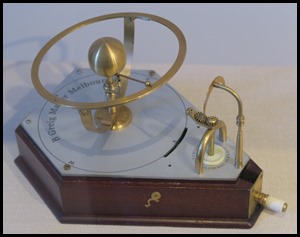 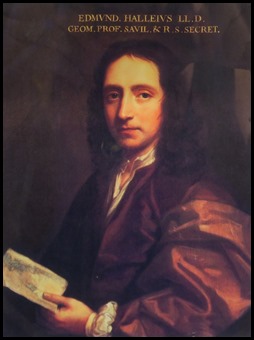 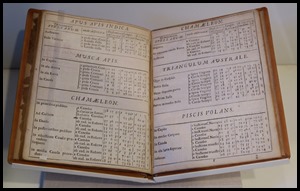 Transit of Venus Orrery. In 1760
Benjamin Cole of London built an orrery to demonstrate the transit of Venus.
While not to scale, the orrery shows the relationship between Earth, Venus and
the Sun for the period of the transit. Turning the handle causes Venus to pass
across the face of the Sun, while Earth rotates about its axis. This replica was
made by orrery maker Brian Greig in 2012. Portrait of Edmond Halley
(1656-1742) published a famous paper in 1716, urging astronomers to ‘diligently’
observe the 1761 transit of Venus. He wrote: “having ascertained with more
exactness the magnitude of the planetary orbits, it may redound to their
immortal fame and glory”. (Painting by Thomas Murray about
1687) Edmund Halley’s Catalogus Stellarum
Australium. (Catalogue of the Southern Hemisphere Stars) includes
observations of the 1677 transit of Mercury, which he made from the island of St
Helena. The English astronomer published an influential paper in 1716 urging
astronomers to observe the transit of Venus from locations around the world,
arguing that these measurements could be used to calculate the distance of the
Sun and gauge the size of the solar system. 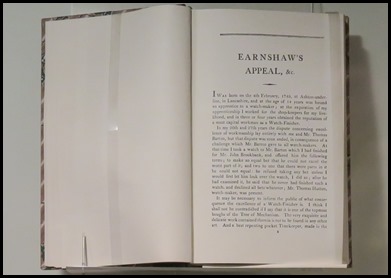 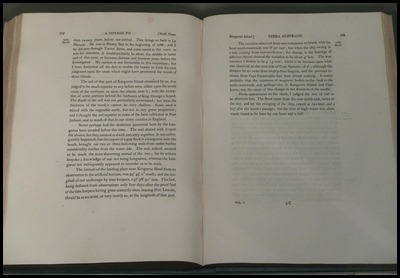 Longitude – Earnshaw’s Appeal to
the Public. This is a reprint of a book published in 1808 by the English
clockmaker Thomas Earnshaw. Earnshaw was one of the people most closely involved
in the development of the chronometer. Feeling that he had not been adequately
rewarded for his work by the British government, Earnshaw wrote this book. In it
he sets out his claim for the superiority of his chronometers over those of
other makers and appeals for better treatment. A Voyage to Terra Australis.
Matthew Flinders wrote up the details of his voyage in two volumes, (one – above
right). In the book he discusses his circumnavigation of the continent in HMS
Investigator, his shipwreck off the coast of Queensland and his nearly seven
year imprisonment on the French island of Mauritius. Sadly Flinders was dying by the time the book was published in
1814 and may not have seen a printed copy. He died on the 19th of July
1814. 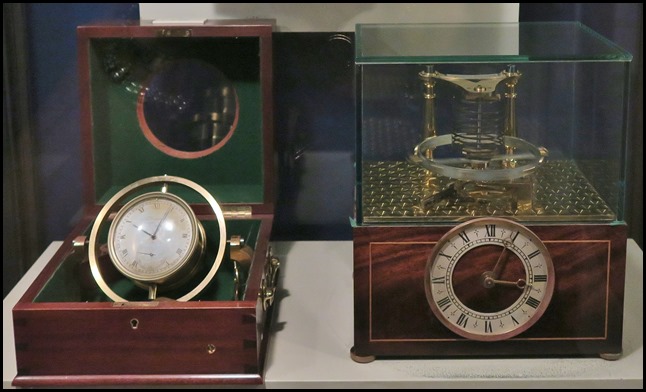 Earnshaw 520 Chronometer. This is
one of five chronometers (the box is modern) used by Matthew Flinders who called
it “This excellent timekeeper”. Made by Thomas Earnshaw, it was the only
chronometer still working at the end of the epic three-year voyage. No wonder
Flinders was full of praise for it. Chronometer Clock. A chronometer
has to cope with a ship’s movement and the many climate changes on a long
voyage. Ordinary types of clocks such as those with pendulums would either stop
or run wildly fast or slow. The accuracy of chronometers is due to the design of their
internal mechanism. Thomas Earnshaw developed the final form of this mechanism
in the 1780’s. This modern clock shows the internal workings of an Earnshaw
chronometer. 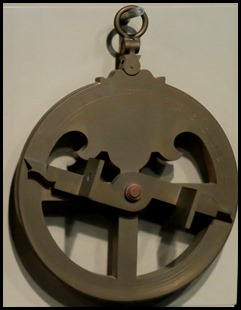 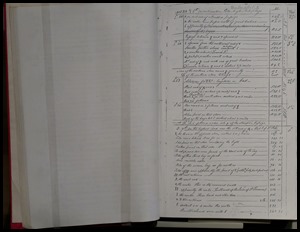 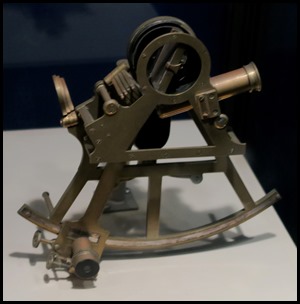 Mariners
Astrolabe. This is a reproduction of a mariners astrolabe found on the
wreck of the Dutch ship Batavia. The ship hit a reef in 1629 with the eventual
loss of 200 lives. Before Matthew Flinders time, mariners astrolabes were
standard equipment. Flinders Bearing Book. This book is
a copy of the book in which Matthew Flinders recorded his observations of the
Australian coastline. During his voyage Flinders was carrying out a detailed
survey. At each location he first established the position of his ship with the
help of a sextant and chronometers. He then measured the directions or bearings
of any features that he could see. Later he used the information in his bearing
book to draw up a map of Terra Australis or Australia. Sextant. A sextant measures the
angles by which a star or the sun is above the horizon. The angle at any place
depends on both the local time and the latitude – how many degrees north or
south the place is from the equator. By making observations with a sextant,
navigators like Flinders could obtain both the time and the latitude. This
sextant dates from 1787 and would be similar to the one used by
Flinders. Navigators no longer need chronometers, sextants and careful
observations. They can use satellite navigation with the help of Global
Positioning System (GPS) satellites. By picking up signals from three or more
satellites, GPS receivers can work out and display positions to great
accuracy. 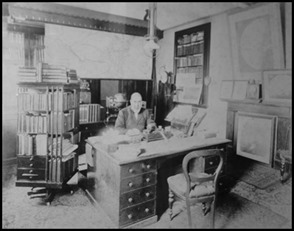 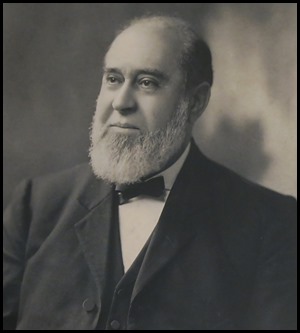 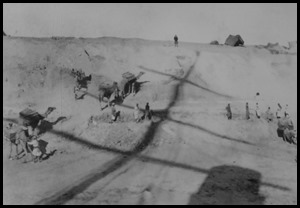 The Star Observer Henry Chamberlain
Russell at his desk. We were standing between the Observatory’s two
domes, which was the office H.C. Russell spent much of his time here reading and
writing about astronomy and meteorology. H.C. Russell pictured in January 1898.
H.C. Russell was the government astronomer at Sydney Observatory, travelled to
the International Astrophotographic Congress in Paris in 1887 on behalf of the
Australian government. Many photographs exist of Henry and his family during
that trip, in the one above you can see the family having fun in shadow of their
ship’s mast and funnel on the sands of Egypt. 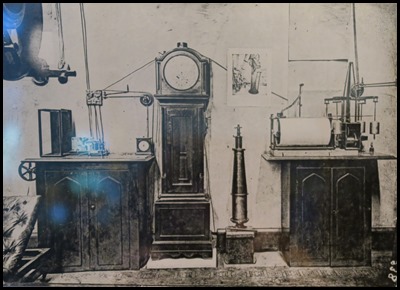 Transit Room pictured in the
1870’s. This photograph shows some of the equipment associated with the transit
circle. In the centre is the clock that provided the daily signals to drop the
time ball in the tower above and, through telegraph wires, the time ball in
Newcastle. On each side of the clock are chronographs for recording time. The
pivot tester is next to the clock. 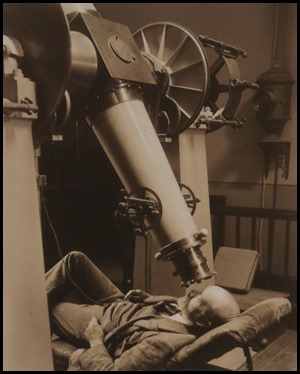 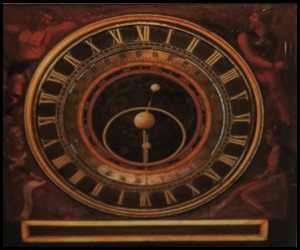 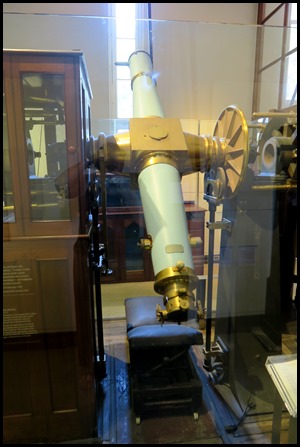 The Transit Circle Telescope, Henry Alfred Lenehan observing.
As in any 19th-century observatory, the telescope was at the heart of the work
of Sydney Observatory. Known as the transit circle, it was used by astronomers
to find the exact time, the positions of the stars and the geographical
coordinates of the Observatory. To find time, the transit circle telescope
relied on the regular daily spin of the earth. As the Earth spun, stars passed
through the field of view of the eyepiece. Imagine a giant clock with only one
hand: the stars are then the numbers on the clock face and the telescope is the
hand showing the time. The grand astronomical clock dial on the ‘Strasburg’ clock model, made in 1889 (on
display in the Powerhouse Museum). H.C. Russell, The Australiasian, 28th of February
1903 said “I think this transit instrument is, perhaps, the most important
in the Observatory. Transit circles are telescopes that can only move
north-south. Astronomers used them to determine the instant the stars cross or
‘transit’ the meridian – an imaginary line passing overhead from north to
south”. The observing couch offered a reasonable degree of comfort as
the astronomers spent hours staring through the eyepiece. The couch was on
rollers so that the observer could manoeuvre themselves into appropriate
positions. Either end of the couch could be raised to provide
support 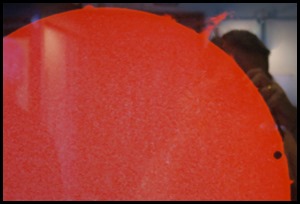 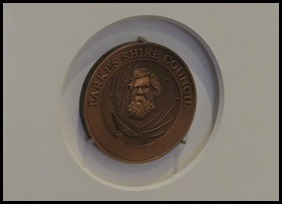 Geoff Wyatt’s image of the 2004 transit of
Venus was taken in the north dome here at the Sydney Observatory through
a special filter that only transmits the red light of hydrogen atoms. He used a
Coronado telescope and Nikon Coolpix camera to capture the spectacular image,
which was the first winner of the David Malin Award,
Australia’s premier prize for celestial photography. 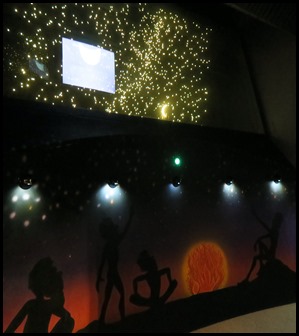 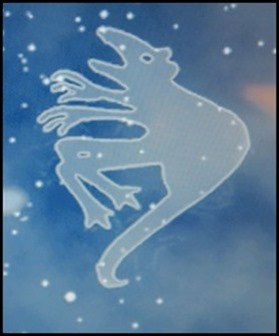 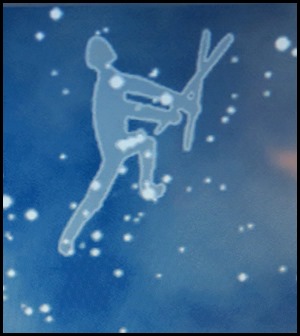 We went into a small
area set aside for Aboriginal creation and dream
stories, we watched several child-like explanations for star
constellations – here are two. Whowie – The Bunyip: Many years ago
there lived on earth Whowie the bunyip. No person or animal was safe when Whowie
was about because he had the most insatiable appetite. The members of the tribe
gathered to kill Whowie by lighting a series of fires close to the monster’s
cave. When he was driven out by the smoke from the fires, the whole tribe
attacked him with their spears. He was so big and strong they took all day to
finally kill him. There has never been another bunyip to this day. But his shape
still fills the sky during December. And Whowie is the largest of the Sky
figures. Wathuarung – Victoria. Marigu Jarn – The Hunter: Jarn is a
youth who believed he was the best hunter of his tribe. He would hunt and show
off his catch to everyone. He also thought he was the best man in the tribe that
he deserved the best wife. Thus, he began to play his dancing sticks. As this
did not work, he then chased Marigu, the seven sisters, through the bush to try
catching a wife. In the evening sky in January, Jarn can be seen as the figure
playing his dancing sticks, while the seven women appear as a group of stars
huddled together to escape from him. Woorabinda-Biregada tribe –
Queensland. 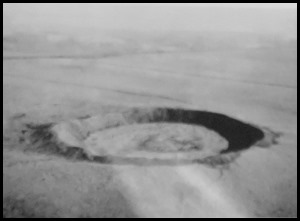 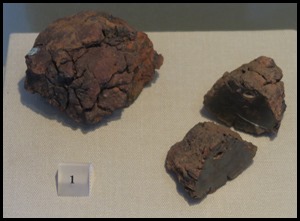 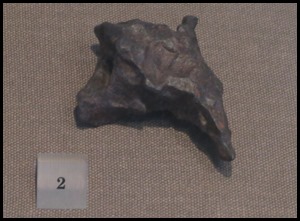 Wolf Creek Crater. The Djaru say
‘There was once a wild man in the form of a star. He saw a woman sitting in
a spring of milky water, under which was tasty sugar leaf. In his hunger, he
came down from the sky and tried to kill the woman to get the sugar leaf. She
quickly moved and he plunged into the Earth, making the crater
the Djaru call Kandimalal’. Another story is ‘when the crescent moon
and the evening star passed very close to each other, the star became so hot
that it fell to the ground causing an enormous
explosion’. Small chunks of rock floating in space are called meteoroids.
As they fall through the Earth’s atmosphere, they heat up and generate visible
streaks of light (meteors). If they strike the Earth, they are known as
meteorites. Meteorites are generally classified as either stony or iron. The
most common type are stony meteorites. The Henbury and Wolfe Creek meteorites,
are mostly of nickel and iron. Wolfe Creek Meteorites. Weight 945,
245 and 210 grams. Wolfe Creek, in the far north of Western Australia, is one of
the best-preserved impact craters in the world. The 900 metre wide by 60 metre
deep crater was formed 300,000 years ago when a 50,000-ton meteorite struck the
Earth with great force. Identified by Europeans in 1947. Henbury Meteorite. Weight 575
grams. About 4,200 years ago a meteoroid broke apart in the atmosphere before
striking the Earth, 145 kilometres south of Alice Springs. The impact carved out
13 craters, the largest of which measures 180 metres wide by 15 metres deep.
Europeans identified the site in 1899 but did not realise it was formed by a
meteorite impact until 1931. Aboriginal people would not venture near the
craters, known as Tatyeye Kepmwere in the Arrente language, fearing the
fire-devil who came from the sun would fill them with iron. 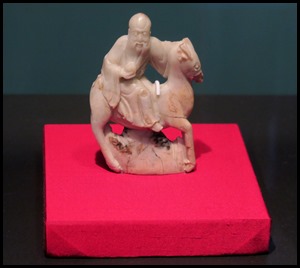 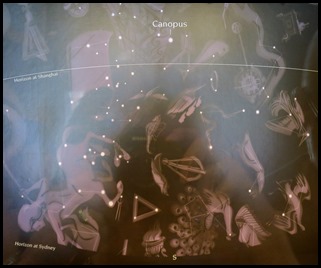 ‘Shou lao’ figure, China – date
unknown. This figure of Shou lao or ‘the god of longevity’ was discovered in
Doctor’s Gully, Port Darwin in 1879. Carved in pinite, the figure holds a peach
and rides a deer. He is also named Shou xing which is the Chinese name for the
southern star Canopus. From the northern hemisphere
Shou xing/Canopus appears low in the sky and is rarely seen. The ancient Chinese
therefore believed that seeing Shou xing brings long life and good
luck. 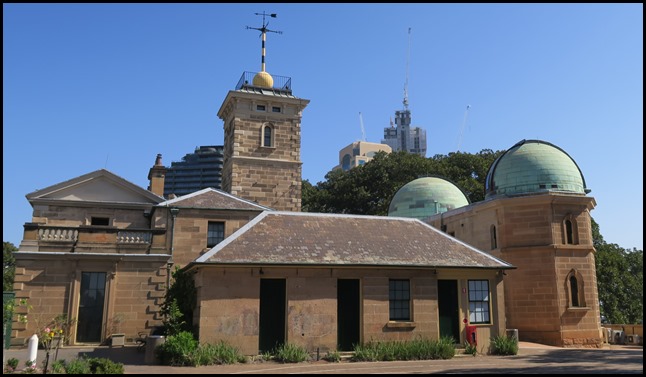 Outside we looked back to the rear of the
Observatory.  From here we had quite a view and of the War Memorial – this side dedicated to the Units of
Volunteers from New South Wales who responded to the Empire call – South African
War 1899-1902........and of course something for Bear’s
trigger finger.......... 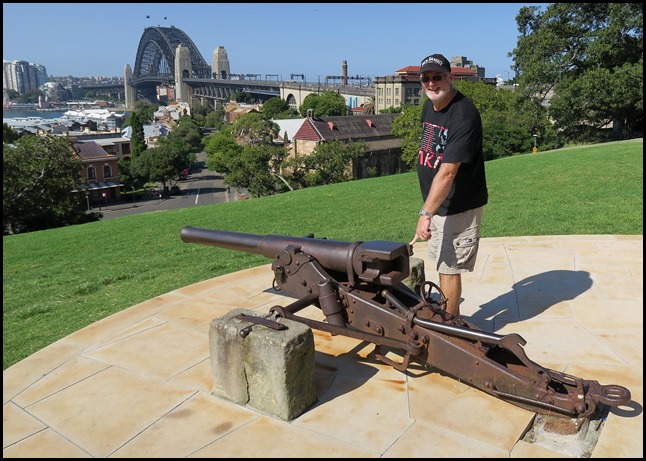 ALL IN ALL FASCINATING, LOTS
OF NEW STUFF
VERY WELL
PRESENTED |